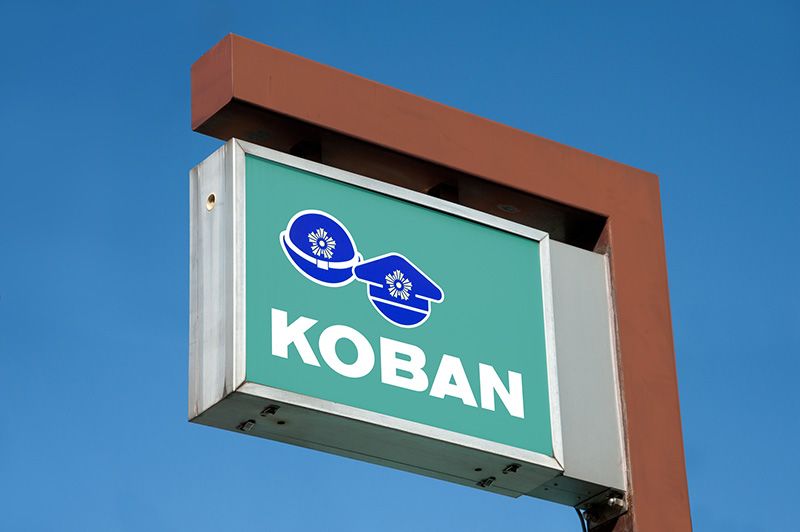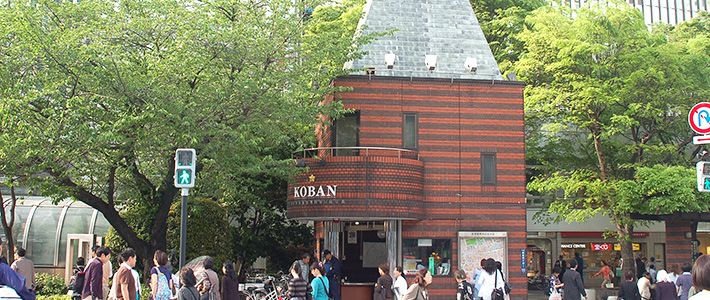
“Kōban”
Society- English
- 日本語
- 简体字
- 繁體字
- Français
- Español
- العربية
- Русский
The Front Line of Public Safety
Kōban are Japan’s ubiquitous police boxes. These outposts are operated by a rotating crew of law enforcement officers from police headquarters and located in areas seen as more susceptible to crime, including near train stations, parks, and other public areas. They serve to maintain public safety at the community level by acting as a contact point between the police and local citizens, providing important services like making people aware of potential safety issues, receiving lost items, and recording minor incidents.
Many in Japan find a police officer standing outside a kōban a reassuring sight and an effective crime deterrent. Police boxes not only keep the peace but also help direct pedestrians, bicyclists, and drivers to nearby destinations. Kōban usually have large, detailed neighborhood maps, and many people take advantage of the geographical knowledge of officers, who readily accept inquiries.
Kōban in urban areas are typically open on a 24-hour basis. Police officers conduct patrols on foot, bicycle, motor scooter, or car, responding to incidents and criminal activity. Gathering information and listening to citizens’ concerns are also important duties of omawarisan, a term meaning “those who make the rounds” used for uniformed police.
As Japan rapidly grays, police boxes are taking on a key role in protecting the well-being of older citizens. This includes offering advice on telephone scams, persistent criminal schemes largely targeting the elderly, and helping to locate seniors suffering from dementia who wander off or go missing, a mounting problem in Japan.
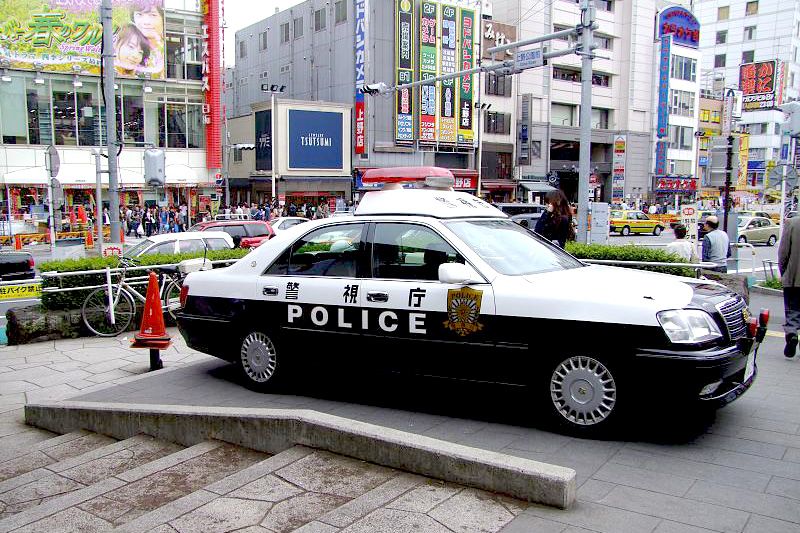 A patokā (squad car) that patrols the area around Ueno Park in Tokyo.
A patokā (squad car) that patrols the area around Ueno Park in Tokyo.
A Visual Part of the Community
Resident-type police boxes known as chūzaisho are common in suburban and rural areas, differing from their urban counterparts in having living quarters for officers and their families. According to figures from the Community Safety Bureau, Japan in 2014 had 12,807 police boxes nationwide, with numbers of kōban and chūzaisho being nearly equal.
Many smaller kōban have periods where no officer is on duty. In such situations there is often a phone residents can use to contact the authorities in case of an emergency. Some select police boxes in Tokyo feature information panels with touchscreens offering neighborhood maps and other essential information.
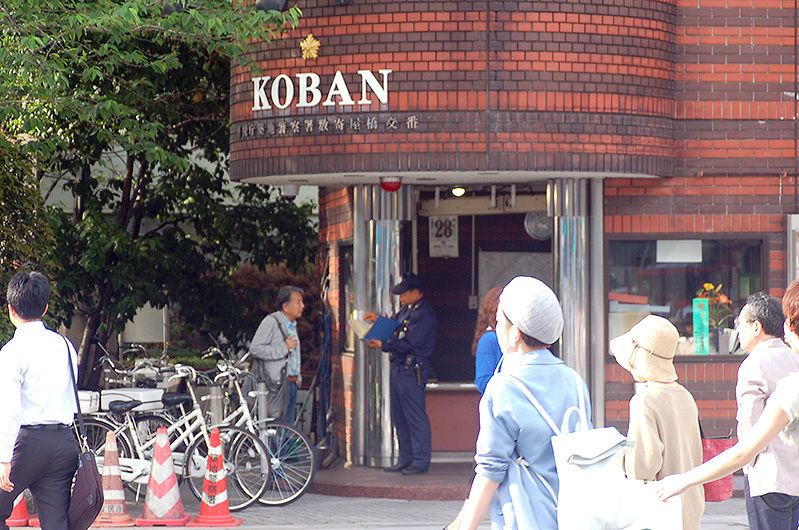 The kōban at the Sukiyabashi intersection in Tokyo’s Ginza district.
The kōban at the Sukiyabashi intersection in Tokyo’s Ginza district.
Some law enforcement departments deploy mobile kōban to areas lacking established police boxes. Often a van or microbus, these specially designated vehicles bolster communication between the police and local residents by patrolling neighborhoods as well as serving as temporary stations when parked.
Even in cases where there is no kōban nearby, people can contact the police in an emergency simply by dialing 110 from either a public or private landline or mobile phone. For non-emergencies, such as discussing neighborhood safety concerns, citizens are advised to call 9110.
The Kōban System Overseas
Since the 1980s the Japan International Cooperation Agency and Tokyo’s Metropolitan Police Department have teamed up to introduce the kōban system to countries in Asia and South America. Singapore was the first nation to bring aboard the police-keeping style in 1983, adapting it to its own law enforcement customs and needs under the name the Koban Way. Since 1997, it has also worked together with Japan in providing training to other countries looking to establish the kōban structure.
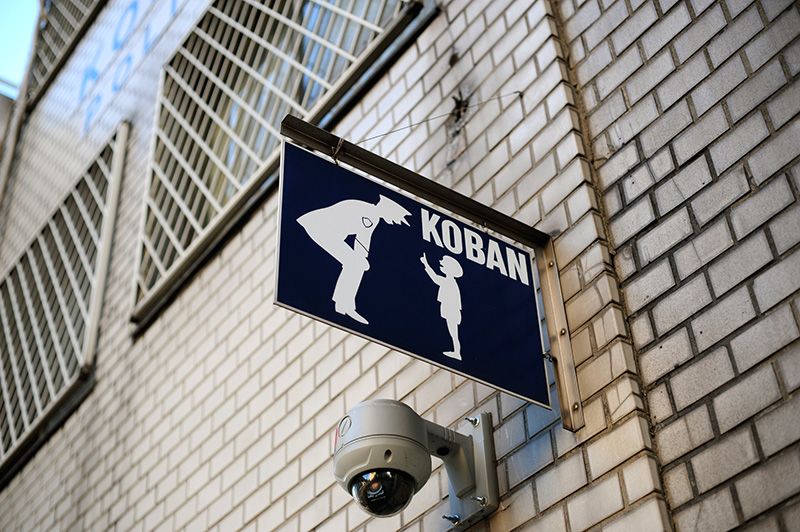 Police boxes serve as safe havens for children in need of assistance.
Police boxes serve as safe havens for children in need of assistance.
Brazil, host of the 2014 soccer World Cup and 2016 Summer Olympic Games, has adopted aspects of the police box system to improve public safety in districts suffering from heavy crime. With assistance from JICA and law-enforcement experts, the Brazilian kōban program has developed to a level where it is now involved in south-south cooperation with several other Latin American nations.
Kōban continue to garner attention overseas, with police boxes popping up in Manhattan and Waikiki as well as such countries as South Korea, Taiwan, and Indonesia. China has also recently introduced versions of the system.
In Japan, the accessibility of kōban maintains their importance as the front line of public safety.
(Banner photo: The iconic kōban at the Sukiyabashi intersection in the Ginza district of Tokyo.)
Photo credit:Patokā at Ueno Park: midorisyu
